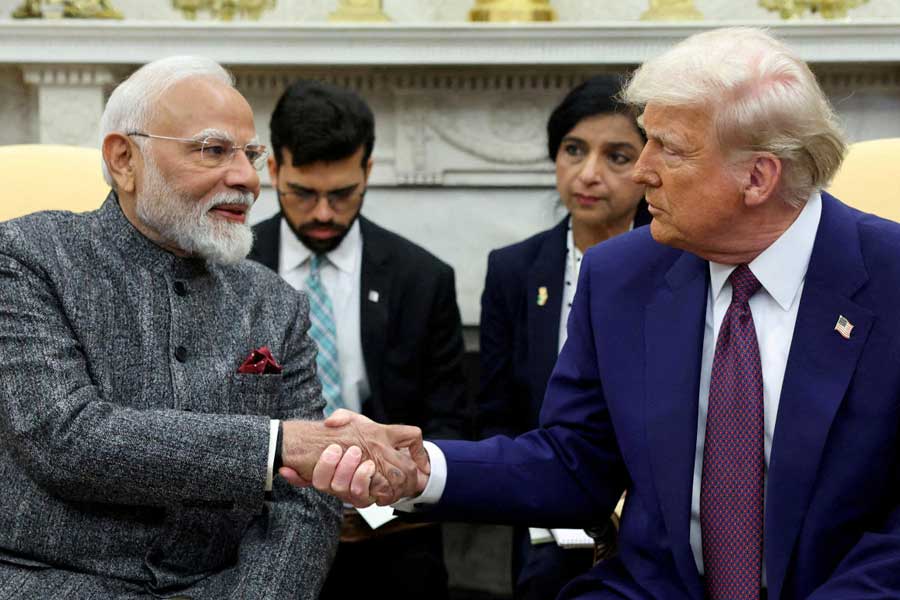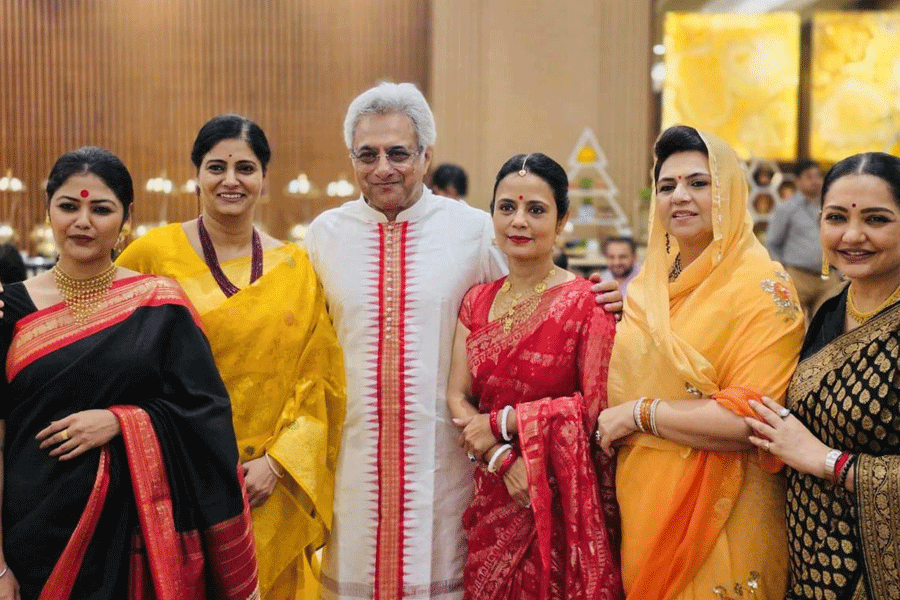Gangtok, April 3: The Pawan Chamling government has decided to honour the 12th Chogyal of Sikkim, Palden Thondup Namgyal, 28 years after he lost his tiny kingdom to India.
The chief minister will inaugurate a park in memory of Palden Namgyal in front of the Namgyal Research Institute of Tibetology at Deorali, on the outskirts of Gangtok, tomorrow. It will be named the Miwang Chogyal Palden Thondup Namgyal Park.
By dedicating a park in honour of Palden Namgyal, who died in 1982, the Sikkim Democratic Front government has rekindled hopes for his son, the 13th Chogyal, that he may finally receive “compensation” from New Delhi for his father's property.
After losing his kingdom in 1975, Palden Namgyal is believed to have claimed compensation of Rs 110 crore for his properties, which had been takenover by the Indian government.
Sikkim chief secretary S.W. Tenzing told The Telegraph: “Tripartite talks are on between the Union home ministry, the state government and the representatives of the late Chogyal's family. The discussions are being held on the basis of claims made by the late Chogyal. Things have been sorted out regarding the private properties and private estates. Several claims have been struck out of the old list.”
Senior Sikkim government officials said the talks are based on a fresh assessment made by both sides. Three attempts made by Palden Namgyal to resolve the issue between 1979 and 1981 had failed because the claims made by the Chogyal's family were unacceptable to the government of India.
The current talks are, however, silent on the signing of the “instrument of Sikkim's accession to India''. Palden Namgyal had refused to “accept” the kingdom's merger with India and put his signature on the “instrument of accession”.
Highly placed sources in Gangtok suggested that the question of signing the “instrument of accession” might not be “relevant” any more because the
13th Chogyal, Wangchuk Namgyal, has no legal status. “It is like settling the
compensation claim of any person whose property has been taken over by the government,” said a former senior Sikkim bureaucrat, who served as an official in the Chogyal's court.
Prince Wangchuk Namgyal, the younger son of Palden Namgyal, was “consecrated” as the 13th “Denzong Chogyal” on February 19, 1982, since the crown prince and his elder brother Tenzing was killed in a road accident in 1978.
However, under the Indian Constitution, the “coronation” of the 13th Chogyal has no “legal status”. The young Prince had himself dismissed the “coronation” as an“unnecessary state ceremony”. “It is for the people to accept and acknowledge me as the new Chogyal. Moreover, you can see for yourself the support I have received from my people,” the grieving prince had told foreign journalists covering his “coronation” ceremony after his father's death in 1982.
Palden Namgyal, the second son of the 11th Chogyal, Sir Tashi Namgyal, had to cut short his studies at Bishop Cotton School, Shimla, following the untimely death of his elder brother, Crown Prince Paljor Namgyal, in 1941. He was killed in an air crash while serving as an officer in the Royal Indian AirForce.
As the heir apparent, Palden Namgyal underwent the Indian Civil Services training at Dehra Doon in 1942. He married Princess Sangey Deki of Tibet in 1950. She passed away in 1957. In March 1963, the crown prince remarried, this time an American woman, Hope Cook. He was crowned the 12th Chogyal after his father's death in 1965.
Palden's reign, however, came to an end after the Assembly passed the Government of Sikkim Act, 1974, under which it became a protectorate. On April 26, 1975, Sikkim became the 22nd state of India and on May 16, Palden Namgyal lost his kingdom, which had ruled for 341 years.











